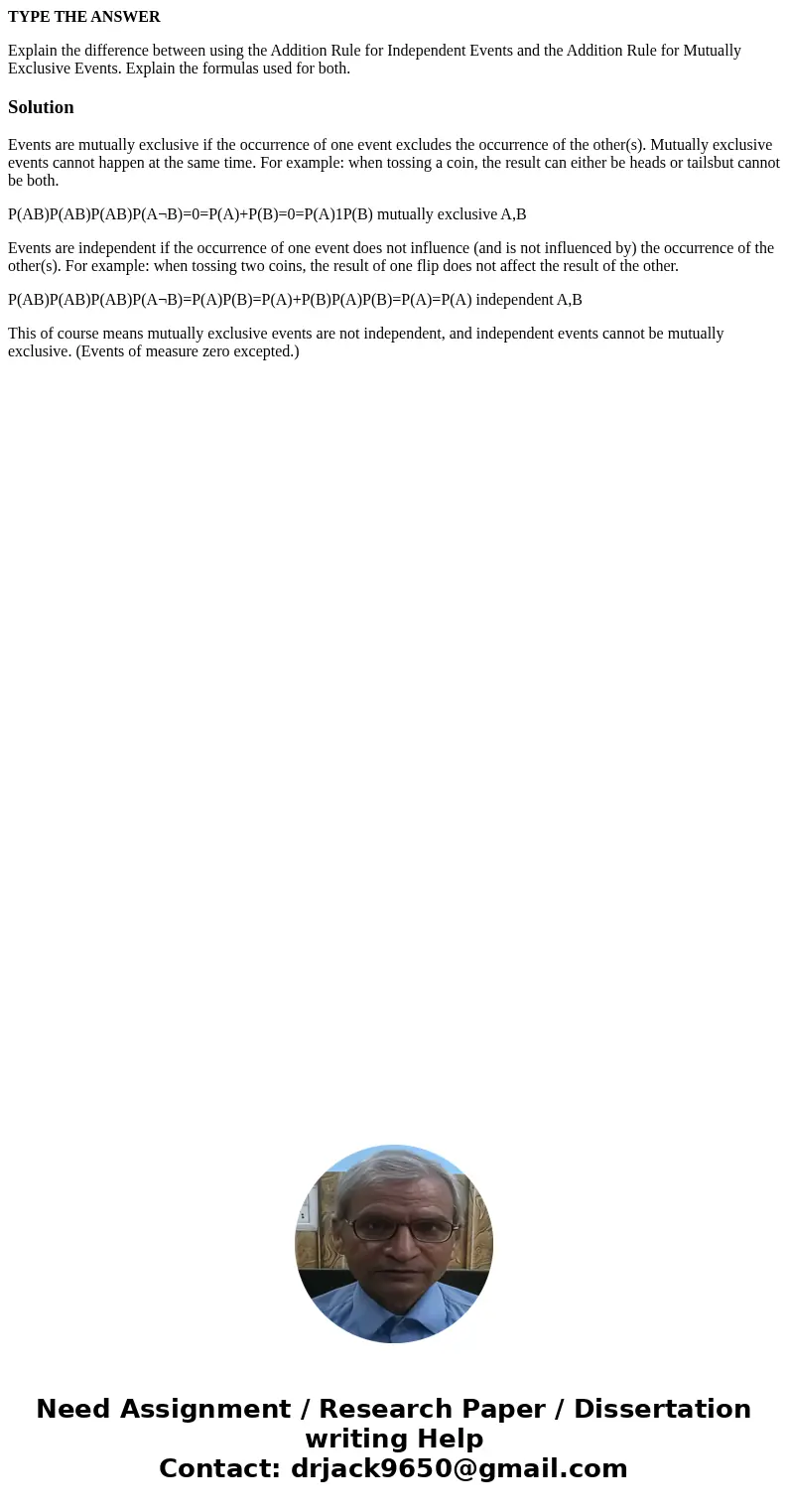TYPE THE ANSWER Explain the difference between using the Add
TYPE THE ANSWER
Explain the difference between using the Addition Rule for Independent Events and the Addition Rule for Mutually Exclusive Events. Explain the formulas used for both.
Solution
Events are mutually exclusive if the occurrence of one event excludes the occurrence of the other(s). Mutually exclusive events cannot happen at the same time. For example: when tossing a coin, the result can either be heads or tailsbut cannot be both.
P(AB)P(AB)P(AB)P(A¬B)=0=P(A)+P(B)=0=P(A)1P(B) mutually exclusive A,B
Events are independent if the occurrence of one event does not influence (and is not influenced by) the occurrence of the other(s). For example: when tossing two coins, the result of one flip does not affect the result of the other.
P(AB)P(AB)P(AB)P(A¬B)=P(A)P(B)=P(A)+P(B)P(A)P(B)=P(A)=P(A) independent A,B
This of course means mutually exclusive events are not independent, and independent events cannot be mutually exclusive. (Events of measure zero excepted.)

 Homework Sourse
Homework Sourse